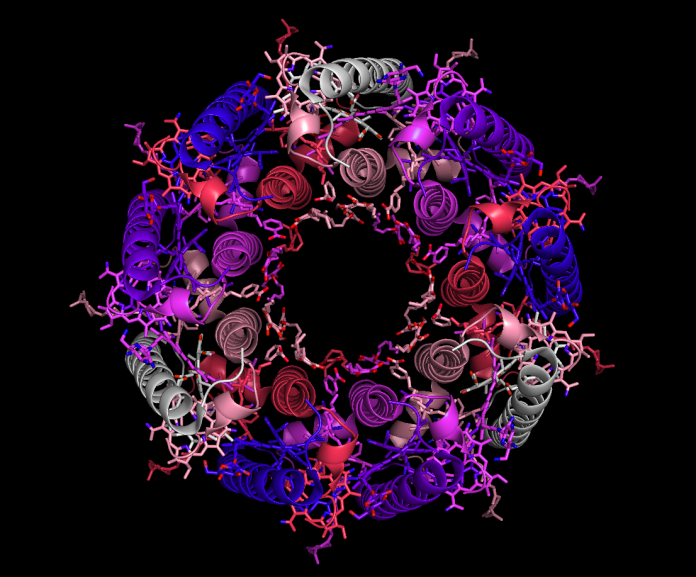A research team from the University of Bergen has conducted an experiment to determine the importance of symmetry in evolution.
Scientists have observed that symmetry appears consistently in biology, for example the molecular machines keeping our cells alive are also strikingly symmetric. Researchers have combined ideas from biology, computer science, and mathematics in order to determine the importance of symmetry in evolution.
Both symmetrical and other simple structures emerge so commonly because evolution has an overwhelming preference for simple ‘algorithms’ – that is, simple instruction sets or recipes for producing a given structure.
“Imagine having to tell a friend how to tile a floor using as few words as possible,” explained Iain Johnston, Professor at the University of Bergen, and author of the study. “You would not say: put diamonds here, long rectangles here, wide rectangles here. You would say something like: put square tiles everywhere. And that simple, easy recipe gives a highly symmetric outcome.”
What can symmetry tell us about evolution?
The team used computational modelling to explore how this preference comes about in biology. They demonstrated that many more possible genomes describe and favour simple algorithms more than complex algorithms.
As evolution searches over possible genomes, simple algorithms are more likely to be discovered – as are, in turn, the more symmetric structures that they produce. The scientists then connected this evolutionary picture to a deep result from the theoretical discipline of algorithmic information theory.
“These intuitions can be formalised in the field of algorithmic information theory, which provides quantitative predictions for the bias towards descriptive simplicity,” added Ard Louis, professor at the University of Oxford and corresponding author on the study.
How can scientists demonstrate this theoretical idea?
The study’s key theoretical idea regarding symmetry in evolution can be illustrated by a twist on a famous thought experiment in evolutionary biology, which pictures a room full of monkeys trying to write a book by typing erratically on a keyboard. Imagine the monkeys are instead trying to write a recipe. Each is far more likely to randomly hit the letters required to spell out a short, simple recipe than a long, complicated one.
If we then follow any recipes the monkeys have produced – our metaphor for producing biological structures from genetic information – we will produce simple outcomes much more often than complicated ones.
The scientists intend to reveal that a wide range of biological structures and systems, from proteins to RNA and signalling networks, adopt algorithmically simple structures with probabilities as predicted by this theory. Going forward, they plan to investigate the predictions that their theory makes for biases in larger-scale developmental processes.
To keep up to date with our content, subscribe for updates on our digital publication and newsletter.





